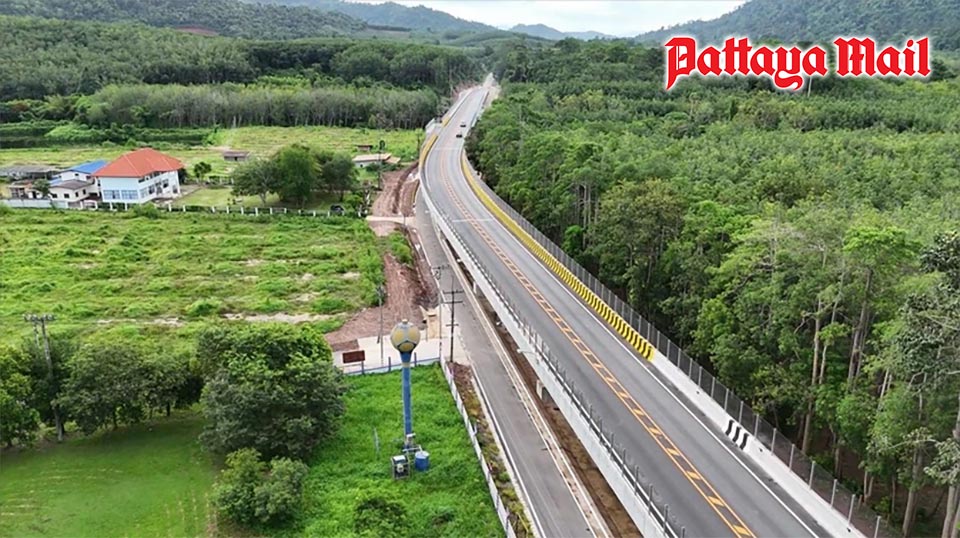Thailand opens first ecological overpass connecting Rayong–Chanthaburi forests
Thailand unveils its first ecological overpass on Rural Road 4060, connecting vital wildlife habitats in Rayong and Chanthaburi.
RAYONG, Thailand – Thailand’s Department of Rural Roads (DRR) has officially opened the country’s first ecological overpass on Rural Road 4060, linking the Khao Ang Rue Nai Wildlife Sanctuary with the Khao Chamao–Khao Wong National Park, a significant move in conserving wildlife corridors in the eastern forest region.
Montree Dechasakulsom, Director-General of the DRR, led the launch ceremony of the overpass located on Rural Road 4060, connecting Wang Nam Khiao subdistrict in Rayong’s Wang Chan district to Khlong Phlu subdistrict in Chanthaburi’s Khao Khitchakut district.
“This is the first ecological overpass of the DRR and the second in Thailand,” Montree stated. “It’s designed not only for traffic convenience, but to help preserve our rich biodiversity by allowing wild animals—particularly elephants—to safely cross between fragmented forest habitats.”
The overpass spans two bridges along the route:
Bridge 1 measures 630 meters in length, spanning from kilometer 4+525 to 5+155. It connects to an existing paved road section 420 meters long and 8 meters wide (including shoulders). Adjacent to this is a parallel road with a U-turn point beneath the bridge, 4 meters wide (including shoulders) and 1,596 meters long. Additionally, there is a one-way U-turn road 3.5 meters wide (including shoulders) extending 180 meters.
Bridge 2 has a total length of 420 meters, covering kilometers 9+517.25 to 9+937.25. It links to an existing paved road section 380 meters long and 8 meters wide (including shoulders). Like Bridge 1, it also has a parallel road with a U-turn point beneath, 4 meters wide (including shoulders) and 1,596 meters long, plus a one-way U-turn road 3.5 meters wide (including shoulders) and 180 meters in length.
The 11-meter-wide overpass features two traffic lanes (one each direction) and a clearance height of 10 meters underneath for wildlife passage. The structure uses corrosion-resistant steel and reinforced concrete.
The 587 million baht overpass allows elephants and other wildlife to safely cross, reducing road accidents and promoting conservation.
The project was completed with a budget of 587 million baht.
The overpass also includes 30-meter-long parking areas on both ends for officials and visitors interested in observing wildlife behavior around the area.
The 30-meter-wide overpass features a fully restored natural ecosystem, with tree planting and terrain design that mimics the surrounding forest. It aims to reduce human-wildlife conflicts, especially incidents involving wild elephants, and to minimize roadkill.
The area surrounding Highway 4060 is part of the larger Eastern Forest Complex, a vast conservation region home to hundreds of species. In recent years, incidents of wild animals—especially elephants—wandering onto roads and causing accidents have raised public concern, leading to calls for infrastructure that accommodates both people and wildlife.
Two bridges spanning over 1 km feature natural vegetation, parking spots, and are designed to support both wildlife and local traffic.
Dual Purpose: Nature and Tourism
Beyond conservation, the project is also expected to support eco-tourism and local communities in Rayong and Chanthaburi provinces. The ecological bridge will serve as an educational attraction and photo spot for nature lovers and tourists heading to Khao Chamao Waterfall and Khao Khitchakut National Park.
Additionally, information boards and lookout points are planned to be installed nearby to explain the importance of wildlife corridors and Thailand’s forest conservation efforts.
The DRR confirmed it will monitor the area using camera traps to track animal movements and gauge the overpass’s success. Early signs are already promising, with camera footage showing wildlife—such as deer and wild boar—exploring the structure just days after vegetation was restored.
The project boosts eco-tourism and supports community development, offering visitors a unique chance to observe Thailand’s rich biodiversity.



